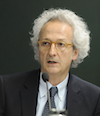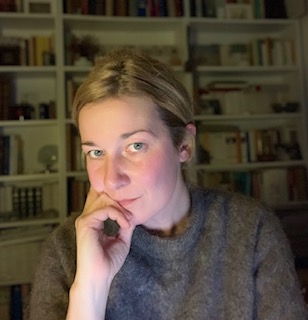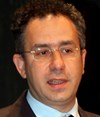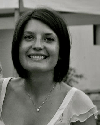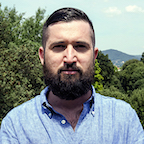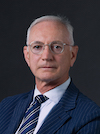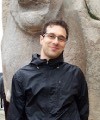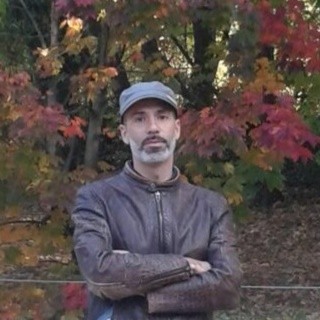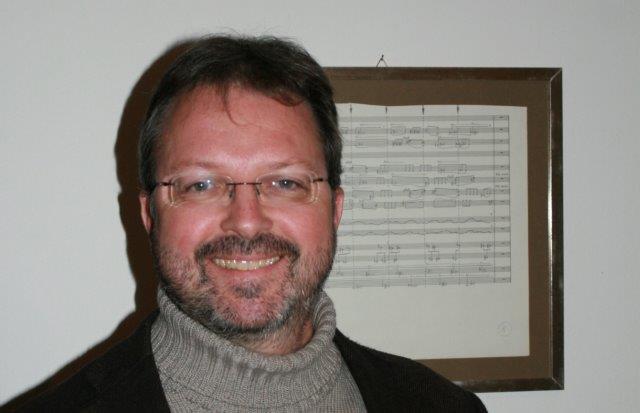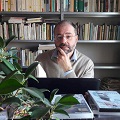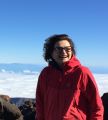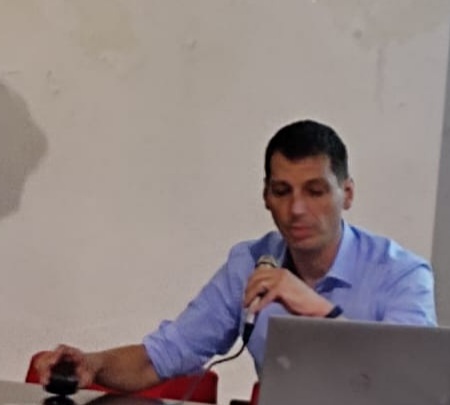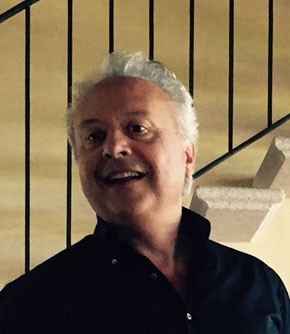Studying at the University of Verona
Here you can find information on the organisational aspects of the Programme, lecture timetables, learning activities and useful contact details for your time at the University, from enrolment to graduation.
Academic calendar
The academic calendar shows the deadlines and scheduled events that are relevant to students, teaching and technical-administrative staff of the University. Public holidays and University closures are also indicated. The academic year normally begins on 1 October each year and ends on 30 September of the following year.
Course calendar
The Academic Calendar sets out the degree programme lecture and exam timetables, as well as the relevant university closure dates..
| Period | From | To |
|---|---|---|
| Sem. 1A | Sep 24, 2018 | Nov 10, 2018 |
| Sem. 1B | Nov 19, 2018 | Jan 12, 2019 |
| Sem. 2A | Feb 18, 2019 | Mar 30, 2019 |
| Sem. 2B | Apr 8, 2019 | Jun 1, 2019 |
| Session | From | To |
|---|---|---|
| Sessione d'esame invernale | Jan 14, 2019 | Feb 16, 2019 |
| Sessione d'esame estiva (gli esami sono sospesi durante la sessione di laurea) | Jun 3, 2019 | Jul 27, 2019 |
| Sessione d'esame autunnale | Aug 26, 2019 | Sep 21, 2019 |
| Session | From | To |
|---|---|---|
| Sessione di laurea estiva | Jul 8, 2019 | Jul 13, 2019 |
| Sessione di laurea autunnale | Nov 4, 2019 | Nov 9, 2019 |
| Sessione di laurea invernale | Mar 30, 2020 | Apr 4, 2020 |
| Period | From | To |
|---|---|---|
| Festa di Ognissanti | Nov 1, 2018 | Nov 1, 2018 |
| Sospensione dell'attività didattica | Nov 2, 2018 | Nov 3, 2018 |
| Festa dell’Immacolata | Dec 8, 2018 | Dec 8, 2018 |
| Vacanze di Natale | Dec 24, 2018 | Jan 5, 2019 |
| Vacanze di Pasqua | Apr 19, 2019 | Apr 23, 2019 |
| Sospensione attività didattica | Apr 24, 2019 | Apr 27, 2019 |
| Festa della liberazione | Apr 25, 2019 | Apr 25, 2019 |
| Festa del lavoro | May 1, 2019 | May 1, 2019 |
| Sospensione dell' attività didattica | May 20, 2019 | May 20, 2019 |
| Festa del Santo Patrono | May 21, 2019 | May 21, 2019 |
| Festa della Repubblica | Jun 2, 2019 | Jun 2, 2019 |
| Vacanze Estive | Aug 12, 2019 | Aug 17, 2019 |
Exam calendar
Exam dates and rounds are managed by the relevant Culture and Civilisation Teaching and Student Services Unit.
To view all the exam sessions available, please use the Exam dashboard on ESSE3.
If you forgot your login details or have problems logging in, please contact the relevant IT HelpDesk, or check the login details recovery web page.
Should you have any doubts or questions, please check the Enrollment FAQs
Academic staff
 liampaul.benison@univr.it
liampaul.benison@univr.it
 riccardo.bertolazzi@univr.it
riccardo.bertolazzi@univr.it
 luca.bochicchio@univr.it
luca.bochicchio@univr.it
 dario.donetti@univr.it
dario.donetti@univr.it
 stefania.pontrandolfo@univr.it
stefania.pontrandolfo@univr.it
Study Plan
The Study Plan includes all modules, teaching and learning activities that each student will need to undertake during their time at the University.
Please select your Study Plan based on your enrollment year.
1° Year
| Modules | Credits | TAF | SSD |
|---|
1 course to be chosen among the following
2° Year activated in the A.Y. 2019/2020
| Modules | Credits | TAF | SSD |
|---|
1 course to be chosen among the following
2 courses to be chosen among the following3 courses to be chosen among the following3° Year activated in the A.Y. 2020/2021
| Modules | Credits | TAF | SSD |
|---|
1 course to be chosen among the following
1 course to be chosen among the following3 courses to be chosen among the following| Modules | Credits | TAF | SSD |
|---|
1 course to be chosen among the following
| Modules | Credits | TAF | SSD |
|---|
1 course to be chosen among the following
2 courses to be chosen among the following3 courses to be chosen among the following| Modules | Credits | TAF | SSD |
|---|
1 course to be chosen among the following
1 course to be chosen among the following3 courses to be chosen among the following| Modules | Credits | TAF | SSD |
|---|
Legend | Type of training activity (TTA)
TAF (Type of Educational Activity) All courses and activities are classified into different types of educational activities, indicated by a letter.
Type D and Type F activities
| years | Modules | TAF | Teacher |
|---|---|---|---|
| 1° 2° 3° | "caro mostro. duecento anni di frankenstein" | F |
Nicola Pasqualicchio
(Coordinator)
|
| 1° 2° 3° | Lectures "Musiche/Culture/Civiltà" | F |
Vincenzo Borghetti
(Coordinator)
|
| 1° 2° 3° | Castelvecchio Lectures (City Art Museums) | F |
Alessandra Zamperini
(Coordinator)
|
| 1° 2° 3° | C.T.G. Lectures | F |
Alessandra Zamperini
(Coordinator)
|
| 1° 2° 3° | Graphic and photographic documentation of the archaeological artefacts: from traditional drawings to digital sources | F |
Diana Sergeeva Dobreva
(Coordinator)
|
| 1° 2° 3° | Giovedì' culturali dell'ISSR I ciclo | F |
Tiziana Franco
(Coordinator)
|
| 1° 2° 3° | Ceramica romana nell'Adriatico. Produzione, tipologia e distribuzione | F |
Diana Sergeeva Dobreva
(Coordinator)
|
| 1° 2° 3° | Univero’ 2018 | F |
Tiziana Franco
(Coordinator)
|
Archaeology and History of Greek and Roman Art (i p) - II MODULO PARTE (P) (2019/2020)
Teaching code
4S02191
Teacher
Credits
6
Also offered in courses:
- Archaeology and History of Greek and Roman Art (i p) - II MODULO PARTE (P) of the course Bachelor’s degree in Humanities
- Archaeology and History of Greek and Roman Art (p) of the course Bachelor’s degree in Humanities
Language
Italian
Scientific Disciplinary Sector (SSD)
L-ANT/07 - CLASSICAL ARCHAEOLOGY
Period
Sem 2B dal Apr 6, 2020 al May 30, 2020.
To show the organization of the course that includes this module, follow this link: Course organization
Learning outcomes
The main aim of the course on Archaeology and History of Greek and Roman Art (part II) is to acquire useful knowledge in identification and typological, functional and chronological classification of the artistic and artisan expressions of the Greek and Roman civilisations between 9th cent. BC to the beginning of the 4th cent. AD. During the lectures a general framework of the Greek and Roman artistic production will be developed through chronological articulation and by paying specific attention to ancient sculpture, portraits, pottery and glass. During the lessons a central theme will be the relationship between Greek and Roman culture e its particular expression in the ancient art and material culture.
The expected results of learning are:
KNOWLEDGES:
1. To be familiar with the basic archaeological terminology.
2. To be aware of the periodization of the Greek and Roman world in order to position correctly the major monuments and objects.
3. To be acquainted with the diachronic development of different styles and techniques, of cultural forms due to variety of artistic choices and the role of the one who orders the commission.
SKILLS
1. To use correctly the basic archaeological terminology, with particular attention to this related to the material culture studies.
2. To adopt interdisciplinary methods and approaches in order to read and understand the ancient art.
3. To put into the correct social, economical and historical background the artistic expressions of the Greek and Roman culture.
4. To disseminate by using suitable vocabulary aspects of the Greek and Roman archaeological heritage.
Program
The course intends to provide an introduction of the historic evolution of Greek and Roman culture through the examination of artistic and artisan products made between 9th cent. BC and the beginning of the 4th cent. AD. The programme of the course is organised into the following educational units:
1. Sculpture:
- Greek models;
- Hellenistic repertoire;
- Roman historical representations;
- Major triumphal monuments;
2. Portraits:
- The lost Greek art and the Roman copies (adopting the Greek art);
- Types of statue groups;
- Links between Greek and Roman cultures;
3. Pottery:
- Greek and Magno-Greek pottery:
a) Productions and repertoire;
b) In the potter’s workshop;
c) Black figure vase-painting;
d) Red figure vase-painting;
- Roman pottery:
a) Production and trade;
b) Consumption and globalisation;
4. Glass
- Technology and workshops
- Hellenistic mould-made glass
- Glass cameo technique
- Blown-made glass
Follow-up meetings
As part of the course will be organised some follow-up meetings, developed through a cross-cutting issue as the research on the relationship between Greek and Roman sculpture; pottery painting and visual transmission; the globalisation of Roman taste.
It’s expected that students have already attended the first part of the course – Archaeology and history of Greek and Roman Art (I part). Furthermore, it is believed that one has good knowledge of History of Greek and Roman world and of ancient geography (we suggest the use of historic atlas). We hereby heartily recommend the participation of the follow-up meetings and seminars, as so of the archaeological excavations organised by the other disciplines related to the field of Classics.
The meetings will be established as taught classes using PowerPoint presentations that will be get available to the students through the e-learning platform.
| Author | Title | Publishing house | Year | ISBN | Notes |
|---|---|---|---|---|---|
| G. Bejor, M. Castoldi, C. Lambrugo | Arte greca. Dal decimo al primo secolo a.C. | Mondadori Università | 2013 | I seguenti paragrafi: Capitolo 1, paragrafi: 1.1, 1.3, 1.4 Capitolo 2, paragrafi: 2.1, 2.3, 2.4, 2.5 Capitolo 3, paragrafi: 3.1, 3.3, 3.5, 3.6, 3.7, 3.9, 3.10 Capitolo 4, paragrafi: 4.1, 4.2, 4.4, 4.5, 4.6 Capitolo 5, paragrafi: 5.1, 5.2, 5.4, 5.5 Capitolo 6, paragrafi: 6.3, 6.4 Capitolo 7, paragrafi: 7.1, 7.2.1, 7.2.2, 7.3, 7.4 Capitolo 8, paragrafi: 8.1, 8.2.2, 8.2.6, 8.4, 8.5 | |
| M. Papini | Arte romana | Mondadori Università | 2016 | I seguenti paragrafi: Capitolo 10, pp. 291-319. Capitolo 11, pp. 320-344. Capitolo 13, pp. 361-383. Capitolo 16, pp. 424-449. Capitolo 17, pp. 450-466. | |
| G. Bejor, M. Castoldi, C. Lambrugo, E. Panero | Botteghe e artigiani | Mondadori Università | 2012 | I seguenti paragrafi: Capitolo 3, paragrafi: 3.1, 3.2 Capitolo 5 | |
| R. Francovich e D. Manacorda | Dizionario di archeologia | Laterza | 2006 | Le seguenti voci: Ceramica, pp. 53-61 Classificazione e tipologia, pp. 61-65 Archeologia del commercio, pp. 65-75 Archeologia del consumo, pp. 85-90 Cultura Materiale, pp. 99-104 Iconografia e iconologia, pp. 163-168 Stile, pp. 282-286 |
Examination Methods
The aim of the exam consists in testing the expected results of the learning objectives previously listed.
The exam will provide written examination that will consist of the identification of 10 monuments or artefacts, of the description of the their stylistic and technical characteristics, of their correct dating (based on the images includes in the PowerPoint presentations). An example of the exam test will be shortly discussed during the lectures.
For the final judgment will factor in the ability of the students to identify with expertise and self-confidence the monuments and the finds presented during the lectures, facing their description and chronological overview, so as the ability to deduce starting from technical analyses of the artefacts social, economical, historical and cultural conclusions.
ATTENTION!!!
Due to the Coronavirus pandemic, and in accordance with the University of Verona guidelines, during the 2020 summer session the assessment modality will be modified as online written exam.
Career prospects
Module/Programme news
News for students
There you will find information, resources and services useful during your time at the University (Student’s exam record, your study plan on ESSE3, Distance Learning courses, university email account, office forms, administrative procedures, etc.). You can log into MyUnivr with your GIA login details: only in this way will you be able to receive notification of all the notices from your teachers and your secretariat via email and soon also via the Univr app.
Graduation
List of theses and work experience proposals
| theses proposals | Research area |
|---|---|
| Ambiti di tesi | Art & Architecture - Art & Architecture |
| Stage | Research area |
|---|---|
| Lavorare in archivio | Various topics |

 +39 045802 8351
+39 045802 8351






